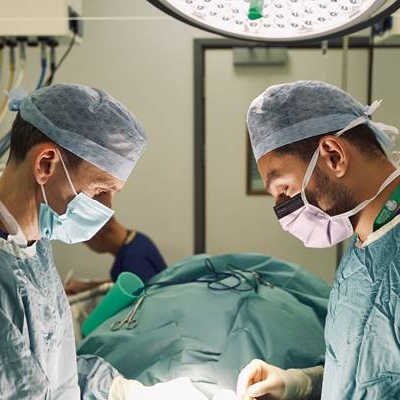- Welcome
Penile Implant Surgery
Your Trusted Guide to Penile Prosthesis Treatment in the USA and Turkey,
Are you struggling with erectile dysfunction (ED) that hasn’t responded to medications like Viagra or Cialis? A penile implant may be the permanent, reliable solution you’ve been searching for. At PENILEIMPLANT.US, we provide comprehensive information about penile prosthesis surgery and connect American patients with world-class treatment options—both domestically and through affordable medical tourism in Turkey.

Proven experience
Over 1,000 successful penile implant Surgery performed by internationally certified surgeons
Significant savings
Costs 60-70% lower than US or Western Europe without compromising quality
- Penile Implant Surgery
Who is a Penile Implant For?
A penile implant is not the first-line treatment for erectile dysfunction, but it becomes the ideal solution for specific groups of men who have exhausted other options or have medical conditions that make alternative treatments ineffective. Understanding whether you’re a candidate for this life-changing procedure is the first step toward reclaiming your sexual health and confidence.
01.
Pills Don't Work for You
If Viagra, Cialis, or Levitra no longer provide reliable erections, a penile implant offers a permanent alternative. These medications fail for 30-40% of men, especially those with severe vascular damage, nerve damage, or advanced diabetes.
02.
Injections and Pumps Have Failed
Penile injections and vacuum devices are common second-line treatments, but they come with significant drawbacks. Injections require stabbing your penis 5-10 minutes before sex—painful, inconvenient, and unromantic. Repeated injections can cause scar tissue, making treatment progressively less effective.
03.
You Have Diabetes-Related ED
Diabetes is one of the leading causes of erectile dysfunction, affecting 50-75% of diabetic men. High blood sugar damages both blood vessels and nerves in the penis, making erections difficult or impossible. Diabetic ED often doesn’t respond well to oral medications because the underlying vascular and nerve damage is too severe.
04.
Prostate Surgery or Radiation
Radical prostatectomy (prostate cancer surgery) and radiation therapy frequently cause erectile dysfunction by damaging the delicate nerves and blood vessels around the prostate. Studies show 40-80% of men experience ED after prostate cancer treatment, even with nerve-sparing surgical techniques.
05.
You Have Peyronie's Disease
Peyronie’s disease causes scar tissue (plaque) to form inside the penis, resulting in curved, painful erections that make intercourse difficult or impossible. Severe cases involve significant curvature (greater than 60 degrees), shortened penis length, and erectile dysfunction. While oral medications and injections may help mild cases, men with severe Peyronie’s often require surgical intervention.
06.
You Want a Permanent, Spontaneous Solution
Some men simply want to eliminate the hassle, planning, and uncertainty of other ED treatments. Pills require timing (take 30-60 minutes before sex), may cause side effects like headaches or vision changes, and don’t always work. Injections demand advance planning and are painful.
07.
You've Had Pelvic Trauma or Injury
Pelvic fractures from car accidents, motorcycle crashes, or other traumatic injuries can damage the nerves and blood vessels essential for erections. This type of ED is often permanent because the structural damage cannot be repaired through medication or therapy. Young men with trauma-related ED face decades of sexual dysfunction, making a penile implant particularly valuable
- Top Rated ED Treatment
Penile Implant Simply Explained
A penile implant is a medical device placed inside your penis during surgery. Think of it as an internal support system that gives you the ability to have an erection whenever you want, without pills, injections, or waiting. The device is completely hidden inside your body—no one can see it, and most partners can’t tell you have one.
The most common type (inflatable implant) uses a simple pump-and-release system. Two soft cylinders are placed inside the erectile chambers of your penis where natural erections normally occur. A small pump about the size of a large marble sits in your scrotum, and a fluid reservoir is placed in your lower abdomen. When you want an erection, you squeeze the scrotal pump several times—this transfers fluid from the reservoir into the cylinders, making your penis firm and erect. After sex, you press a release button on the pump, and the fluid returns to the reservoir, making your penis soft again. The entire process takes seconds and becomes automatic with practice.
The procedure is straightforward and performed under anesthesia, so you feel nothing during surgery. Your surgeon makes a small incision (usually in the lower abdomen or scrotum), creates space inside the penis for the cylinders, places the pump in the scrotum, and positions the reservoir in the abdomen. The surgery takes 45-90 minutes. Most men go home the same day and recover at home. Within 6-8 weeks, you’re fully healed and ready to use your implant.
Pills, injections, and pumps require planning and don’t always work. A penile implant is always ready—you decide when you want an erection, and it happens. There’s no waiting 30 minutes for a pill to work, no painful injections before sex, and no worrying whether it will work this time. You get your spontaneity back. You get your confidence back. You get your sex life back.




Access to the Best Penile Implant Surgeons in Turkey




- Penile Implant Procedures
- JCI-Accredited Hospitals
- FDA-Approved Implant Brands
- Happy Patients
- Choosing the right penile implant Surgery
Types of Penile Implants

1. Three-Piece Inflatable Penile Implant
The Most Natural Option
The three-piece inflatable implant is the most advanced and popular option, chosen by approximately 80% of men who get penile implants. This system consists of two cylinders placed inside the erectile chambers of your penis, a small pump positioned in your scrotum, and a fluid reservoir placed in your lower abdomen behind the abdominal muscles. When you want an erection, you squeeze the scrotal pump several times, which transfers saline fluid from the reservoir into the cylinders, creating a firm, natural-looking erection. After intercourse, you press a release valve on the pump, and the fluid drains back into the reservoir, returning your penis to a completely flaccid state.

2. Two-Piece Inflatable Penile Implant
Reliability and Simplicity
The two-piece inflatable implant is a simplified version that eliminates the abdominal reservoir by combining the pump and reservoir into a single unit placed in the scrotum. Two cylinders still go inside the penis, but the fluid system is self-contained in the scrotal pump-reservoir combination. You operate it the same way—squeeze the pump to inflate, press the release to deflate—but the surgery is somewhat simpler because there’s no need to place a reservoir in the abdomen.

3. Malleable (Semi-Rigid) Penile Implant
Reliability and Simplicity
The malleable implant is the simplest and most straightforward option, consisting of two bendable rods placed inside the erectile chambers of your penis. These rods are made of a silicone outer layer surrounding a series of interlocking plastic or metal segments that allow the penis to be positioned. There are no pumps, no reservoirs, and no moving parts—just two flexible rods that maintain whatever position you put them in. When you want to have sex, you manually bend your penis upward into position. When you’re done, you bend it back down against your body or leg.
- World-Class Expertise You Can Trust
Our Surgeons
When you’re considering a life-changing procedure like penile implant surgery, choosing the right surgeon is everything. Our carefully vetted network of urological specialists in Turkey represents the highest level of expertise, training, and patient care available anywhere in the world.
Get a free consultation with professionals.
- Getting a penile implant in Turkey
Our Simple 4-Step Process
01.

Free Consultation & Evaluation
Your journey begins with a confidential, no-obligation consultation—completely free and conducted from the comfort of your home. Simply contact us via phone, email, or our website contact form.
02.

Treatment Planning
Once you decide to proceed, we handle every logistical detail while you prepare for your trip. Our team coordinates your complete treatment package, which includes surgery scheduling, hospital reservation, hotel booking for your recovery period, airport transfers, and medical translator services.
03.

Surgery & Hospital Care
Your treatment experience in Turkey is carefully orchestrated for maximum comfort and minimal stress. When you arrive at Istanbul Airport, our driver will be waiting with a name sign to transport you directly to your hotel.
04.

Recovery & Follow-Up
Your recovery continues at a comfortable hotel near the hospital, where you can rest, heal, and gradually resume light activities. During these days, you’ll have a scheduled follow-up appointment with your surgeon for incision inspection, removal of any external sutures if necessary.
Patient Stories
Get a free consultation with professionals.
- Why Turkey Is the Best Penile Implant Destination
World-Class Urological Expertise
Turkish urologists perform significantly higher volumes of penile implant surgeries than their American counterparts. While a typical US urologist might perform 10-20 implants annually, our partner surgeons in Turkey perform 150-250+ procedures per year. This extraordinary volume creates surgical mastery—they’ve encountered every anatomical variation, managed every complication, and refined their technique through thousands of repetitions. Studies consistently show that high-volume surgeons achieve better outcomes, lower complication rates, and higher patient satisfaction, making Turkey’s focused expertise a significant clinical advantage.
- Unbeatable Cost Savings: 60-70% Less
- JCI-Accredited Hospitals Meeting International Standards
- Istanbul: The Perfect Medical Tourism Hub
- Proven Safety and Success Rates
- Comprehensive Medical Tourism Infrastructure

- FAQ
Frequently Asked Questions
In this section, we answer the most common questions about penile prosthesis in Türkiye, so you can make your decision with complete confidence.
The cost difference between getting a penile implant in Turkey versus the United States is substantial and often the primary reason American men choose medical tourism. In the United States, a three-piece inflatable penile implant typically costs between $20,000 and $30,000 out-of-pocket if you're paying without insurance coverage. This price includes the surgeon's fee, the device itself, hospital facility charges, anesthesia, and immediate post-operative care. Some American centers charge even more, with total costs reaching $35,000-$40,000 at prestigious institutions in major cities like New York, Los Angeles, or Boston.
In Turkey, the identical penile implant procedure with the same FDA-approved devices costs between $6,000 and $10,000 for a three-piece inflatable system. Malleable penile implants cost even less, typically $4,000-$6,000. These Turkish prices include everything: the surgery itself, the premium implant device (Coloplast Titan or AMS 700), hospital stay for 1-2 nights, all medications and surgical supplies, pre-operative consultations and testing, post-operative follow-up appointments, medical translator services, and airport transfers. When you add round-trip airfare from the US ($800-$1,500) and hotel accommodation for recovery ($500-$700), your total investment is approximately $8,000-$12,000—still saving you $12,000-$20,000 compared to US pricing.
The reason for this dramatic price difference isn't inferior quality or substandard devices. You receive exactly the same Coloplast and Boston Scientific penile implants used by top American urologists. The savings come from Turkey's lower operational costs, including significantly lower hospital overhead, medical staff salaries, malpractice insurance premiums, and administrative expenses. Turkish healthcare operates efficiently without the complex insurance billing systems and administrative bureaucracy that inflates American medical costs by 200-300%. For uninsured Americans or those whose insurance doesn't cover penile implant surgery, Turkey offers the only realistic path to affordable treatment.
Insurance coverage for penile implant surgery in the United States varies significantly depending on your specific policy, insurance provider, and the underlying cause of your erectile dysfunction. Most major insurance companies including Medicare, Blue Cross Blue Shield, Aetna, Cigna, and UnitedHealthcare do provide coverage for penile implants when the procedure is deemed medically necessary. Medical necessity typically means you have organic erectile dysfunction (not purely psychological), you've failed conservative treatments like oral medications and injections for at least 6-12 months, and the ED significantly impacts your quality of life.
However, insurance approval is never guaranteed. Many policies have strict requirements, extensive prior authorization processes, and high deductibles or co-pays that leave you paying $5,000-$10,000 out-of-pocket even with coverage. Some insurance plans explicitly exclude penile prosthesis surgery or classify it as elective/cosmetic despite its medical necessity designation. Insurance denials are common, particularly if your ED is considered less severe or if you haven't exhausted every conservative treatment option first. The appeal process can take months and often results in continued denial.
If your insurance denies coverage or if you're uninsured, paying $20,000-$30,000 out-of-pocket for a penile implant in the United States becomes financially impossible for most American families. This is precisely why medical tourism to Turkey has become so popular—it transforms an unaffordable procedure into an achievable investment. For $8,000-$12,000 total (including travel), you can get your penile implant without insurance involvement, without prior authorization headaches, without claim denials, and without waiting months for approval. You simply pay the surgical center directly and schedule your procedure within weeks rather than navigating insurance bureaucracy for months with uncertain outcomes.
Absolutely yes—this is one of the most important facts for American patients to understand. The penile implant devices used in our partner hospitals in Turkey are identical to those used by urologists at Johns Hopkins, Mayo Clinic, Cleveland Clinic, and every other top American medical center. We exclusively use FDA-approved penile implants manufactured by Coloplast (headquartered in Denmark) and Boston Scientific (headquartered in the United States). These are the only two major manufacturers of penile prostheses globally, and they sell the exact same devices worldwide with identical manufacturing standards, quality control, and specifications.
The specific models we use include the Coloplast Titan (the most popular three-piece inflatable penile implant worldwide), the AMS 700 series by Boston Scientific (with 40+ years of proven track record), the AMS Ambicor two-piece system, and the Coloplast Genesis malleable implant. These devices are manufactured in FDA-inspected facilities, undergo rigorous quality testing, and come with full manufacturer warranties valid anywhere in the world. There are no "Turkish versions" or inferior substitutes—you receive genuine, factory-sealed devices with serial numbers that can be verified with the manufacturers.
When you receive your penile implant in Turkey, your surgeon provides you with complete device documentation including the model name, serial number, size specifications, and implantation card. You should keep this card in your wallet permanently—it identifies your device for any future medical care, airport security if questioned, and warranty claims if needed. Any urologist in the United States who examines you after surgery will immediately recognize your Coloplast or AMS implant because they're the same devices they use daily. This standardization ensures you can receive follow-up care, device activation training, or revision surgery from any qualified American urologist without compatibility issues.
This is a legitimate concern for American patients considering medical tourism, and it deserves a comprehensive answer. The urological surgeons in our Turkey network are not only qualified—they're among the most experienced penile implant specialists in the world. Every surgeon is board-certified in urology through rigorous examination and training requirements administered by the Turkish Board of Urology. Many completed additional fellowship training specifically in prosthetic urology and male sexual medicine at prestigious institutions in the United States, United Kingdom, Germany, and other European countries.
Our partner surgeons maintain active memberships in international professional organizations including the American Urological Association (AUA), European Association of Urology (EAU), International Society for Sexual Medicine (ISSM), and Sexual Medicine Society of North America (SMSNA). They regularly attend international conferences, publish research in peer-reviewed urological journals, and participate in continuing medical education to remain current with evolving techniques and technologies. Several have served as proctors for Coloplast and Boston Scientific, meaning they train other urologists worldwide in penile implant surgical techniques.
The most compelling evidence of surgical expertise is volume—our partner surgeons perform 150-250+ penile implant procedures annually, compared to 10-20 per year for typical American urologists. This extraordinary volume translates directly to surgical mastery. They've encountered every anatomical variation, managed every potential complication, refined their technique through thousands of repetitions, and developed efficiency that reduces surgical time and tissue trauma. Studies consistently demonstrate that high-volume surgeons achieve better outcomes, lower complication rates, shorter operative times, and higher patient satisfaction scores. When you choose our Turkey program, you're accessing world-class surgical expertise that exceeds what's available in most American cities outside of major academic medical centers.
Post-operative complications after penile implant surgery are uncommon but possible, and having a clear plan for managing them is essential when traveling abroad for treatment. The most common issues include infection (1-3% risk), device malfunction (3-5% over 10 years), persistent pain beyond normal recovery, or wound healing problems. Our comprehensive approach ensures you're protected and supported regardless of where complications occur.
During your recovery in Turkey (7-10 days), you're under direct care of your surgical team who monitors you daily and addresses any immediate concerns. Before you leave Istanbul, your surgeon conducts a thorough examination, ensures healing is progressing normally, and provides you with detailed written instructions in English covering warning signs of complications, emergency contact information, and when to seek medical care. You'll also receive a complete medical report documenting your surgery, device specifications, post-operative findings, and medications prescribed—essential documentation for any future healthcare provider.
If you develop complications after returning home, you have multiple support options. First, your Turkish surgeon remains available via email and video consultation to evaluate symptoms, provide guidance, and determine whether you need immediate medical attention. Many issues can be assessed remotely and managed conservatively. Second, we help coordinate care with your local urologist in the United States. Any competent American urologist can examine you, diagnose complications, and provide appropriate treatment since your FDA-approved penile implant is the same device they're trained to manage. Most US urologists are professional and willing to provide follow-up care for surgery performed elsewhere, especially when it involves standard devices and procedures they handle regularly.
For device-related issues (malfunction, mechanical failure, or defects), your manufacturer warranty covers replacement regardless of where surgery occurred. Coloplast and Boston Scientific honor their warranties worldwide, and revision surgery can be performed by any qualified urologist. If infection occurs requiring device removal, this can be done at any American hospital, though such severe complications are rare with modern antibiotic-coated implants. Financial responsibility for complication management varies—routine follow-up is typically covered by your US health insurance, while additional procedures may require out-of-pocket payment or insurance coverage depending on your policy.
The recommended stay in Turkey for penile implant surgery is 7-10 days total, which provides adequate time for the procedure, immediate recovery, initial healing assessment, and safe travel home. Here's the typical timeline breakdown: You arrive in Istanbul one day before surgery for final pre-operative consultation, physical examination, laboratory testing if needed, and hospital admission paperwork. This gives you time to rest from your flight, meet your surgical team, ask last-minute questions, and mentally prepare.
Surgery day is typically your second day in Turkey. The penile implant procedure takes 45-90 minutes depending on whether you're getting an inflatable or malleable device. After surgery, you stay in the hospital for 1-2 nights for observation, pain management, and initial recovery monitoring. Most patients are discharged on post-operative day 1 or 2 once pain is controlled, you're able to urinate normally, and the surgical team confirms healing is progressing well.
Following hospital discharge, you spend 5-7 days recovering at a nearby hotel. This period allows your body to heal sufficiently before the physical stress of international air travel. During these days, you rest, take prescribed medications, follow activity restrictions, and gradually resume light activities like short walks and eating at nearby restaurants. You'll have a scheduled follow-up appointment with your surgeon around post-operative day 5-7 for incision inspection, removal of external sutures if applicable, assessment of healing progress, and final instructions before travel. Your surgeon must medically clear you for air travel before you fly home.
The 7-10 day timeframe balances adequate recovery with minimal time away from home and work. Some patients ask about shorter stays, but attempting to fly long-haul within 3-4 days of surgery increases risks including swelling from altitude and sitting, bleeding complications, difficulty managing pain during travel, and inadequate healing time before your surgeon can assess outcomes. The additional few days significantly improve safety and comfort. If complications arise during your stay, the timeline may extend, though this is uncommon. Most patients feel well enough by day 7-8 to travel comfortably, though you'll still need to take precautions like requesting an aisle seat, standing and walking periodically during the flight, and avoiding heavy lifting with your luggage.
Flying home after penile implant surgery is completely safe once your surgeon medically clears you for travel, typically 7-10 days post-operatively. The penile implant device contains no components that pose risks during air travel—the inflatable system uses saline solution (saltwater) and medical-grade silicone, neither of which is affected by altitude, cabin pressure changes, or the stresses of flight. Thousands of men fly internationally every day with penile implants without issues.
Airport security and TSA screening also pose no problems. Penile implants do not trigger metal detectors because modern devices contain minimal metal components, primarily in the pump mechanism. The amount is so small that it doesn't activate standard metal detector alarms. Even if you pass through advanced full-body scanners, the device is internal and not flagged as a security concern. TSA agents are trained to recognize medical implants and do not subject passengers to invasive questioning or searches over legitimate medical devices.
That said, you should carry your penile implant identification card provided by your surgeon after surgery. This wallet-sized card lists your device type, model number, serial number, and implantation date. While you'll rarely need to show it, having documentation provides peace of mind and resolves any questions if they arise. Some patients inform TSA officers proactively if they're concerned, stating "I have a medical implant," though this is unnecessary in most cases. The device is completely concealed under clothing and undetectable during normal security procedures.
For your flight home, request an aisle seat to facilitate easy bathroom access and the ability to stand and stretch periodically. Prolonged sitting can cause swelling and discomfort during early recovery, so walking the cabin every 1-2 hours improves circulation and reduces stiffness. Wear loose, comfortable clothing and avoid tight pants that might put pressure on your surgical area. Stay well-hydrated during the flight, take your pain medication as prescribed before boarding, and use a small pillow for cushioning if needed. Most patients report the flight home is manageable and less uncomfortable than anticipated.
Yes, obtaining follow-up care in the United States after your penile implant surgery in Turkey is straightforward and standard practice in medical tourism. Your follow-up care actually occurs in two phases: immediate post-operative care in Turkey and long-term management in the US. During your stay in Istanbul, your Turkish surgeon provides all immediate post-operative care including daily hospital visits, wound inspection, pain management, medication adjustments, and a comprehensive follow-up appointment before you leave Turkey. This ensures any acute issues are identified and addressed while you're still under your surgical team's direct care.
After returning home, you can establish care with a urologist in your local area for ongoing monitoring and device management. The process is simple: bring your surgical report and device documentation to a US urologist, explain that you had a penile implant placed abroad, and request follow-up care. The vast majority of American urologists are professional and willing to provide this care—you have a standard FDA-approved device (Coloplast or AMS) that they're trained to manage, and there's no ethical issue with monitoring another surgeon's work. They'll examine your incision, assess healing, answer questions about recovery progression, and eventually teach you how to operate your inflatable implant at 6-8 weeks post-surgery.
Your Turkish surgeon also remains available for remote consultation via email and video call for any questions during recovery. This dual support system—local US urologist for hands-on care plus Turkish surgeon who knows your surgical details—provides comprehensive coverage. Many patients maintain this arrangement long-term, seeing their US urologist for annual check-ups while contacting their Turkish surgeon occasionally for specific device questions or concerns. The standardized nature of penile implant devices makes this international care coordination seamless—every urologist worldwide manages these devices using the same activation techniques, troubleshooting approaches, and clinical protocols.
If you don't have an established urologist in the US, we can help you find one in your area who's experienced with penile implants and comfortable providing follow-up care for medical tourism patients. Most major cities have multiple urologists, and sexual medicine specialists are particularly welcoming since they understand the financial barriers that drive patients to seek affordable care abroad.
Recovery from penile implant surgery progresses through several distinct phases, and understanding the timeline helps you plan appropriately for work leave and return to normal activities. The immediate post-operative period (days 1-7) involves rest, pain management, and wound healing. You'll experience moderate discomfort well-controlled with prescription pain medication, along with swelling, bruising, and some difficulty walking normally due to groin soreness. Most men describe the pain as uncomfortable but tolerable—less severe than they anticipated. During this first week, you should rest at your hotel, avoid strenuous activities, keep the surgical area clean and dry, and take all prescribed medications including antibiotics to prevent infection.
The early recovery phase (weeks 2-3) brings significant improvement. Pain decreases substantially and can usually be managed with over-the-counter medications like ibuprofen. Swelling and bruising gradually resolve, and you regain normal mobility. Most men return to desk jobs or light-duty work during week 2-3, though you should avoid heavy lifting (over 10-15 pounds), strenuous exercise, or prolonged physical activity. If your job involves manual labor, construction, or heavy physical demands, plan for 4-6 weeks off work to ensure adequate healing before resuming those activities.
The intermediate healing phase (weeks 4-6) represents continued recovery as internal tissues fully heal around your penile implant. External incisions typically heal completely by week 4, though internal healing continues for several more weeks. You can gradually increase physical activity including light exercise, walking, and swimming. However, you must avoid sexual activity, masturbation, and any manipulation of the penis during this period to allow proper implant positioning and tissue integration.
The activation phase (weeks 6-8) is when your surgeon clears you to begin using your penile implant for sexual activity. At a follow-up appointment around week 6-8, your doctor or urologist teaches you how to operate the inflatable device—how to pump it up, how to deflate it, and how to troubleshoot any issues. They'll have you practice several times in the office until you're comfortable and confident. After receiving clearance, you can resume sexual intercourse. Many doctors recommend starting gradually, having sex a few times weekly initially, then increasing frequency as comfort and confidence grow.
Full recovery and return to all normal activities typically occurs by 8-12 weeks post-surgery. By this time, your penile implant is fully integrated, you're experienced operating it, and any residual discomfort or swelling has completely resolved. You can resume all physical activities including gym workouts, running, contact sports, and unrestricted sexual activity. Most men report that by 3 months post-surgery, they've completely forgotten about the recovery process and are simply enjoying their restored sexual function.
Penile implants have among the highest success and satisfaction rates of any surgical procedure in medicine—these are genuinely life-changing devices with exceptional outcomes. From a technical standpoint, surgical success rates (meaning the device is successfully implanted and functions properly) exceed 95% when performed by experienced surgeons. Infection rates with modern antibiotic-coated penile implants range from 1-3%, significantly lower than the 5-10% rates seen with older non-coated devices. Device mechanical reliability is excellent, with 10-year survival rates (device continuing to function without needing revision) of approximately 90-95% for inflatable implants and even higher for malleable rods.
The most important metric, however, is patient satisfaction—and this is where penile implants truly excel. Multiple large-scale studies show that 90-95% of men who receive penile implants report being satisfied or very satisfied with their decision. This extraordinary satisfaction rate stems from the device's reliability (it works every time you need it), the return of spontaneous intimacy (no planning or medication required), the natural feel during intercourse, and the elimination of performance anxiety that plagued them during years of erectile dysfunction.
Partner satisfaction rates are equally impressive, with 85-90% of partners reporting satisfaction with the penile implant. Partners appreciate the return of spontaneity, the fact that erections feel natural and warm (not artificial), the elimination of the stress and pressure surrounding sex, and their partner's restored confidence and enthusiasm for intimacy. Many couples report their sexual relationship becomes better than it was even before erectile dysfunction began because the implant removes uncertainty and performance pressure entirely.
Long-term satisfaction remains high even decades after surgery. Studies following men 10-15 years post-implantation show sustained satisfaction rates above 85%, with most men stating they would make the same decision again and recommending the procedure to other men with ED. Even patients who experience device malfunction requiring revision surgery typically maintain positive views because the functioning years provided such dramatic quality of life improvement. The combination of reliable function, natural feel, and relationship benefits creates an outcome that men consistently describe as "life-changing" and "the best decision I ever made."
It's worth noting that satisfaction rates are highest among men with realistic expectations. The penile implant provides reliable erections for intercourse, but it doesn't increase penis size beyond your natural erect length, doesn't enhance sensation or orgasm intensity (though it preserves normal sensation), and doesn't increase sexual desire or libido. Men who understand these realities and choose the implant primarily to restore erectile function for intercourse achieve the highest satisfaction levels.
Penis size concerns are among the most common questions men ask before penile implant surgery, and it's important to have realistic expectations. In most cases, your erect penis length with the implant will be approximately the same as your natural erect length before erectile dysfunction progressed. However, many men with long-standing ED have already experienced some length loss due to penile fibrosis (scar tissue formation) from years without regular erections. When this occurs, the penile implant restores rigidity but cannot reverse the length loss that occurred before surgery.
Some men experience a slight decrease in length (typically 0.5-1 inch) after penile implant surgery. This occurs because the cylinders placed inside the erectile chambers may not completely fill the entire length of your penis, or because surgical dissection creates some tissue retraction during healing. Experienced surgeons minimize this through careful sizing—they measure your penis during surgery and select the longest cylinders that safely fit. Some surgeons also perform additional techniques like corporal stretching or use expandable-tip cylinders designed to maximize length.
Girth (width) typically remains the same or slightly increases with inflatable penile implants. When inflated, the cylinders expand both in length and circumference, often creating a fuller appearance than some men had with their natural erections, especially if ED had been causing only partial tumescence. Malleable implants maintain consistent girth similar to your natural size.
An important consideration is that many men perceive their penis as smaller after implant surgery when looking down at it while flaccid. This is because they're comparing it to their memory of natural flaccid size before ED progressed. In reality, years of erectile dysfunction often cause baseline penile tissue loss, and the implant is restoring function to a penis that's already undergone some atrophy. Partners typically don't notice any size difference because the erect dimensions are similar to what they remember.
If penile length is a significant concern, discuss this extensively with your surgeon during consultation. They can explain realistic expectations based on your current penile dimensions, suggest strategies to maximize length preservation, and help you understand that while minor length changes may occur, the restored ability to have reliable, firm erections for satisfying intercourse far outweighs small dimensional changes for the vast majority of men. The functional improvement and relationship benefits consistently prove more valuable than length preservation in patient satisfaction studies.
This is an excellent question that addresses common misconceptions about penile implants. The device only affects erectile rigidity—it does not change sensation, orgasm capability, or ejaculation. Let's address each aspect: Penile sensation remains completely normal after implant surgery because the implant is placed inside the erectile chambers (corpora cavernosa) deep within the penis, not in the skin or sensory nerve pathways. The nerves responsible for feeling touch, temperature, pleasure, and all other sensations run along the outside of these chambers and are carefully preserved during surgery. You'll feel everything normally during foreplay, intercourse, and orgasm.
Orgasm (the pleasurable climax of sexual activity) is controlled by different mechanisms than erection and remains entirely intact with a penile implant. The nerves and reflexes responsible for orgasm are not affected by the device. Most men report that orgasms feel exactly the same after implant surgery as before, and some even report enhanced orgasm quality because the firmer erections and elimination of performance anxiety allow them to relax and fully enjoy the experience. The psychological relief of knowing you can reliably achieve and maintain an erection often translates to more satisfying sexual experiences overall.
Ejaculation depends on whether you were able to ejaculate before surgery. The penile implant itself doesn't affect ejaculatory function—if you could ejaculate before the procedure, you'll continue to ejaculate afterward. If erectile dysfunction had progressed to the point where you couldn't achieve ejaculation due to inadequate rigidity, the implant may actually restore ejaculatory function by providing the firmness necessary for the reflex. However, if you have separate ejaculatory dysfunction (retrograde ejaculation, nerve damage affecting ejaculation, etc.), the implant won't correct these issues since they're independent of erectile mechanics.
One important note: Some men with severe long-standing ED forget what normal sexual function feels like. After getting a penile implant and resuming regular sexual activity, they sometimes report that sensation, orgasm, and ejaculation feel "different" than they remember. This is typically not because the implant changed these functions, but because they're relearning normal sexual experience after years of dysfunction. Most men adapt quickly and within a few months feel completely natural with their restored sexuality.
The bottom line is that a penile implant is purely a mechanical device for creating rigidity. It doesn't interfere with the complex neurological and physiological processes controlling sensation, pleasure, orgasm, or ejaculation. You remain capable of all the same sexual experiences you had before erectile dysfunction—the implant simply restores the firmness necessary for penetrative intercourse.
Like any surgical procedure, penile implant surgery carries risks and potential complications that you should understand before proceeding. However, it's important to maintain perspective—serious complications are uncommon with modern surgical techniques, antibiotic-coated devices, and experienced surgeons. The most significant risk is infection, occurring in approximately 1-3% of cases with antibiotic-coated penile implants (higher with non-coated devices). Signs of infection include increasing pain after initial improvement, fever, redness spreading from the incision, pus or drainage from the surgical site, and foul odor. Infection typically occurs within the first 2-4 weeks after surgery and requires prompt treatment with antibiotics. Severe infections may require surgical device removal, waiting 3-6 months for complete healing, then reimplantation of a new device. Modern infection rates are dramatically lower than historical rates thanks to antibiotic-impregnated devices like Coloplast's InhibiZone and AMS's InhibiZone coatings.
Device malfunction is another potential complication, affecting approximately 5% of inflatable penile implants over 10 years. Mechanical problems can include fluid leaks, pump failure, cylinder defects, or tubing disconnection.
When malfunction occurs, the device may not inflate properly, not deflate fully, or cause discomfort. Most malfunctions are covered under manufacturer warranty (typically 5 years), and repair involves a revision surgery to replace the defective component or the entire device. Malleable implants have much lower malfunction rates since they have no moving parts—essentially, there's nothing to break mechanically.
Pain during recovery is expected and normal, but chronic pain lasting beyond 3-6 months occurs in approximately 2-5% of patients. This persistent discomfort may result from nerve irritation, capsule formation around the device, or improper device sizing. Most chronic pain cases gradually improve over time, but some require pain management interventions or device revision. Interestingly, pain is more common with malleable implants since the constant semi-rigid state can cause ongoing discomfort, whereas inflatable devices remain soft and comfortable when deflated.
Device erosion (the implant wearing through penile tissue and emerging through skin) is rare with modern surgical techniques, occurring in less than 1% of cases. Erosion is more common in men with poor wound healing (diabetics, smokers), those with decreased penile sensation who don't notice early warning signs, or following radiation therapy that compromised tissue quality. If erosion occurs, the device must be removed, and reimplantation may or may not be possible depending on tissue damage.
Other potential complications include hematoma (blood collection requiring drainage), seroma (fluid collection), cosmetic concerns (visible pump in scrotum, altered penile appearance), urinary retention requiring temporary catheterization, altered sensitivity though usually temporary, and anesthesia complications though rare with modern anesthesia techniques. The risk profile varies based on individual factors—diabetics have higher infection risk, patients with previous pelvic surgery face more surgical difficulty, smokers experience worse healing, and men with compromised immune systems have elevated complication rates.
Despite this list of potential problems, it's crucial to understand that most men experience uncomplicated recovery and excellent long-term outcomes. The 90-95% patient satisfaction rate demonstrates that complications, while possible, don't negate the tremendous benefit most men receive from penile implants. Choosing an experienced high-volume surgeon, following post-operative instructions carefully, and addressing any concerns promptly minimize your complication risk significantly.
Read our blogs
Discover the latest articles, tips, and guides on penile implants, penile prostheses, and treatments in Turkey.
On our blog, we share reliable medical information, real patient experiences, and news from the world of male medical tourism.
Subscribe to our newsletter
Stay in touch with us to receive the latest news.
Main Menu
Copyright © 2025 MagicalClinic. All rights reserved.


